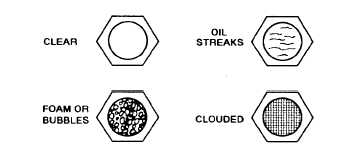2. The refrigerant is routed to the expansion valve through high-pressure lines and hoses.
3. The expansion valve reduces refrigerant pressure to the evaporator by allowing a controlled amount of liquid refrigerant to enter it.
4. A stream of air is passed over the coils in the evaporator as refrigerant enters.
5. As the low-pressure refrigerant moves through the coils in the evaporator, it absorbs heat from the airstream, which produces a cooling effect.
6. As the refrigerant nears the end of the coils in the evaporator, greater amounts of heat are absorbed. This causes the low-pressure liquid refrigerant to boil and change to a gas as it exits the evaporator.
7. As the refrigerant enters the compressor, the pumping action increases refrigerant pressure, which also causes a rise in temperature.
8. The high-pressure, high-temperature gas enters the condenser, where heat is removed by an outside ambient airstream moving over the coils. This causes the gas to condense and return to a liquid form again.
9. The high-pressure liquid refrigerant now enters the receiver again to begin another cycle. This continuous cycle, along with the dehumidifying and filtering effect, produces a comfortable atmosphere on hot days.
Figure 13-1 shows the refrigeration cycle. You should trace the order of the cycle to understand it fully.
COMPONENTS OF THE AIR-CONDITIONING SYSTEM
Each air-conditioning system must have a receiver/drier, an expansion valve or metering device, an evaporator, a compressor, and a condenser. Without these components, an air-conditioning system will not function. Additionally, the system must have some means of control. The following information briefly covers each air-conditioning component and the controls involved.
THE RECEIVER/DRIER
The receiver (fig. 13-3), otherwise known as a filter-drier or accumulator-drier, is a cylindrical-shaped metal tank. The tank is hollow with an inlet to the top of the hollow cylinder. The outlet port has a tube attached to it that extends to the bottom of the receiver. This tube assures that only liquid refrigerant will exit the receiver,

Figure 13-4. - Possible sight glass conditions.
because any gas entering will tend to float above the liquid.
Filter - The filter is mounted inside the receiver on the end of the outlet pipe. This filter removes any impurities from the refrigerant by straining it.
Desiccant - A special desiccant or drying agent, also, is located inside the receiver. This agent removes any moisture from the system.
Relief Valve - Some systems use a relief valve mounted near the top of the receiver. This valve is designed to open when system pressure exceeds approximately 450 to 500 psi. As the relief valve opens, it vents refrigerant into the atmosphere. As soon as excess pressure is released, the valve closes again so the system will not be evacuated completely.
Sight Glass - A sight glass is a small, round, glass-covered hole, sometimes mounted on the outlet side of the receiver near the top. This observation hole is a visual aid you use in determining the condition and amount of refrigerant in the system. If bubbles or foam is observed in the sight glass while the system is operating (above 70°F [21°C]) (fig. 13-4), it may indicate that the system is low on refrigerant. Some systems have a moisture-sensitive element built into the sight glass. If excessive moisture is present, the element turns pink. If the system moisture content is within limits, the element remains blue. In many later automotive air-conditioning systems, the sight glass has been eliminated. In such applications, you must depend on the system pressures.
THE EXPANSION SYSTEM
The refrigerant expansion system is designed to regulate the amount of refrigerant entering the evaporator and to reduce its pressure.
Continue Reading